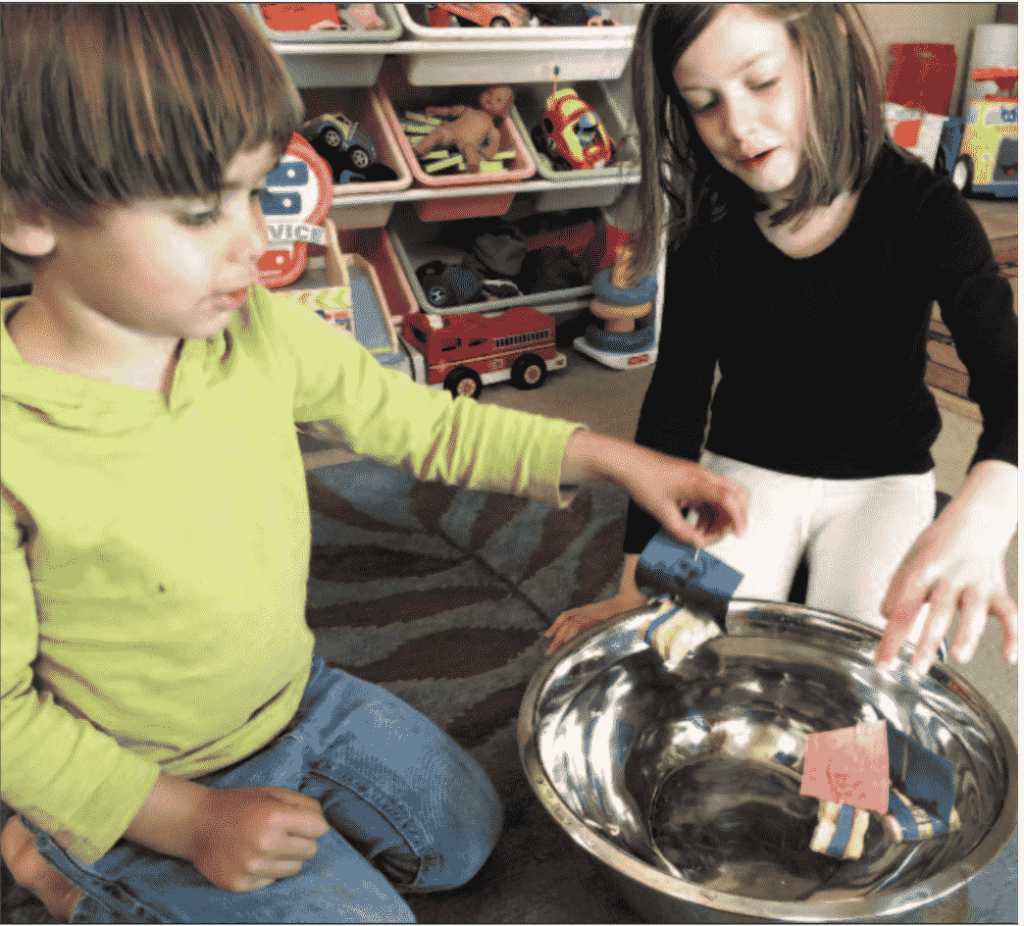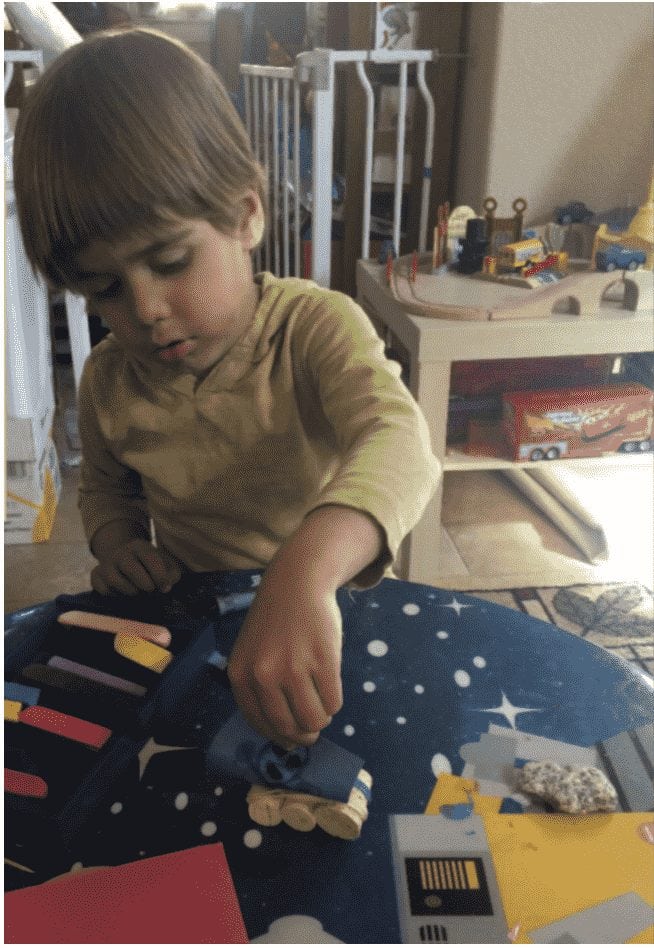Hands On Cork Boats
By Jennifer K. Mahal

What You Need
-3 corks–same size
-2 rubber bands
-Toothpick
-Construction paper or cardstock
-Scissors
-Optional: crayons, markers, or paint
Look out upon Monterey Bay on any given day and you are likely to see a boat floating in the water. sail boats, row boats, fishing boats, even large Coast Guard cutters all float. But if you throw a rock in the water, it will sink! So how does a large boat made of heavy steel stay afloat while a small pebble ends up in Davy Jones’ locker?
In ancient Greece, a scientist and mathematician named Archimedes discovered why things float. He wrote what is known as the Archimedes Principle, which says that when a solid object is placed in fluid, it experiences an upward force (buoyancy) that is equal to the weight of the fluid that the object pushes aside (displaces). If you’ve ever seen the water in your bathtub rise when get into it, you’ve seen Archimedes’ Principle in action.
A large steel ship might weigh a lot, but the weight of the water it pushes aside is greater. In part, that’s because ships are built with hollow hulls. Because the water it displaces weighs more than the ship, the ship will float.

A solid rock may not weigh much, but the water it pushes aside weighs even less, so it sinks. There is a rock that floats — pumice. That’s because pumice, which is lava that cooled very quickly, has many tiny bubbles of gas trapped in it. Pumice has been known to float for years before sinking.
Cork, usually made from the bark of a tree called a cork oak, is also riddled with lots of tiny air pockets. the air in the holes help make cork lighter than the water it displaces. The weight of the cork pushing down is less than the force of the water pushing up.
Boats may float with Archimedes Principle, but they also need stability if they want to avoid tipping over. On big boats, how one person moves won’t affect whether the boat capsizes (tips over). In a rowboat, however, where you place your weight changes the center of the boat’s gravity . That’s why sitting or standing on the side of a small boat is a sure way to get you and your gear all wet.
Using three corks of the same size (wine corks work well), place them next to each other lengthwise. The corks should make a rectangle, like a raft. Fasten them together by stretching a rubber band around one of the outside edges. Use a second rubber band to secure the other side. This is the most difficult part of the project, as the corks like to slip. If the rubber band is too long, double it up. One rubber band may be enough, just make sure the corks are tightly together.
Cut a small rectangle out of construction paper or cardstock. decorate it with crayon, marker or paint, if you like. Gently bend (do not fold) the paper lengthwise. Thread the toothpick from one side to the other. With the paper sail on the toothpick, firmly stick the toothpick into the middle cork. Now your boat is ready to sail on the high seas, or at least the local water table.
Discover more science and art at the Santa Cruz Children’s Museum of Discovery in the Capitola Mall. Learn more at www.sccmod.org.
Jennifer K Mahal, who writes children’s books under the name Jenni Kaye, is a volunteer with the Santa Cruz Children’s Museum of Discovery. She lives in Santa Cruz with her husband and two children.





